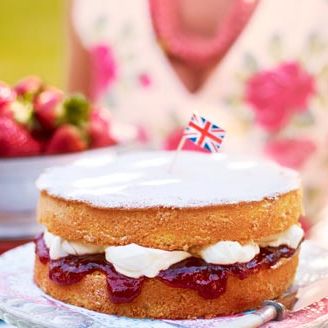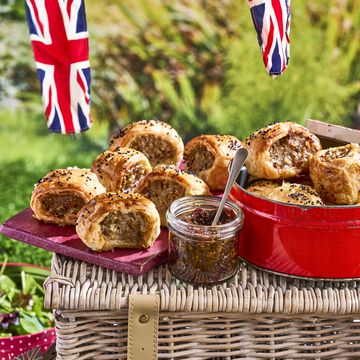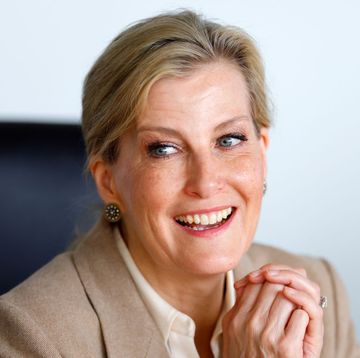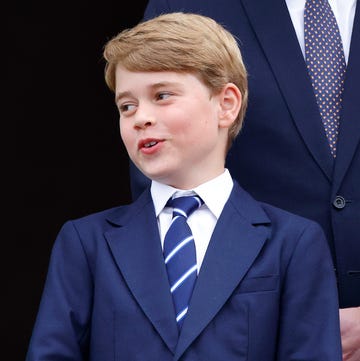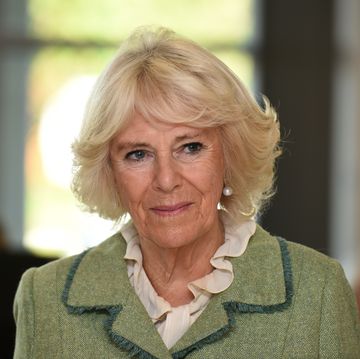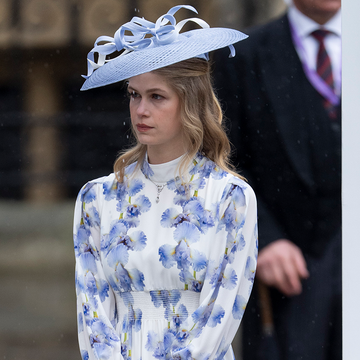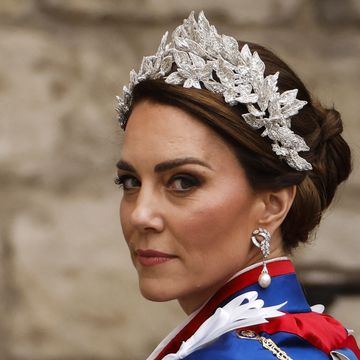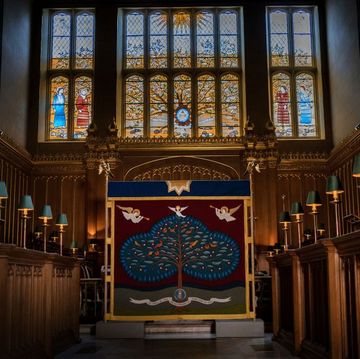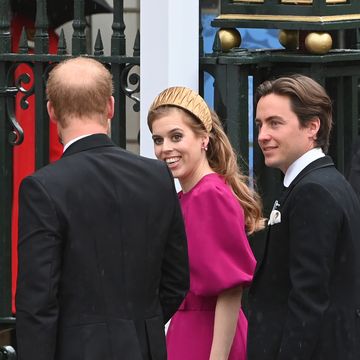Some parts of the Coronation ceremony date back to the Old Testament, while other elements will be impeccably 21st century. Certainly, Westminster Abbey will never have seen a Coronation featuring representatives from so many faiths – nor so few members of the old aristocracy.
In as much as Coronations reflect the personalities of monarchs and the times in which they live, this one offers plenty of glimpses into the character of our new King – and the tone of the reign that lies ahead.
We had a few indications in the immediate aftermath of the passing of Queen Elizabeth II. Among the crowds that gathered at the railings of Buckingham Palace – where they have always gathered at times of great Royal or national importance – there were very mixed emotions. Some people had come to pay tribute to a great life well lived; others were bereft, in tears and too overcome to speak. The rapidly expanding piles of flowers in front of the gates brought back echoes of those dark days following the death of Diana, Princess of Wales. Back then, the monarchy had been accused of being detached, remote and out of touch with the public. All that had changed, however, when The Queen eventually returned to the Palace from Balmoral and met the crowds.
What to read next
King Charles III was not going to allow a vacuum to develop this time; within 24 hours of The Queen’s death at Balmoral, he was among the crowds outside the Palace. Again, the mood changed instantly.
That evening, he took to the airwaves with a beautifully pitched address, which even his critics would acknowledge caught the mood of the nation. He then embarked on a tour of the home nations at a pace that took everyone by surprise.
Here was a Monarch in command and control of events, rather than responding to them. In that first speech that he made as Monarch, he had echoed what everyone felt about his mother while also pledging to follow her example ‘throughout the remaining time God grants me’. Those were very telling words, reminiscent of one of his late father’s favourite phrases: ‘Just get on with it.’
In short, Charles III is a king in a hurry. He wants to make the most of what will, self-evidently, not be a long reign, given that he is easily the oldest new Monarch in British history (one whose 75th birthday falls six months after his Coronation).
In 1952, it was more than 10 months before the new Queen broadcast to her people at Christmas. In 2022, it took the new King a day. After her accession in February 1952, it would be more than a year and a half before the new Queen made her first official trip overseas. King Charles III waited a matter of months.
In 1952, there was no rush to have the new Queen installed on her throne; she was a 25-year-old mother of two, her country was still on wartime rations and much of London was still a bombsite. It would be almost a year and a half before the nation was in a fit state for a Coronation. When the time came, the mood was one of exuberance and national rejuvenation.
The news that Mount Everest had been conquered shortly before all of this by a Commonwealth expedition only reinforced the sense of a new, golden, second Elizabethan age. For millions watching on a television for the very first time, here was a near-miraculous blend of ancient and modern.
What, then, are the prospects for the new Carolean era (as historians are already calling it)? Not even the most adoring fans of King Charles III would argue that we stand on the cusp of a new, golden age in the first half of 2023. He has inherited a United Kingdom less united than at any point since the battle for Irish independence. Across some of his 14 other realms, republican rumblings grow louder in line with changing national aspirations. On the domestic front, he must cope with the very public unhappiness of his younger son and the seemingly insoluble problem of the elder of his two brothers.
It is often said that The King wants ‘a slimmed-down’ monarchy. That may once have been his vision a decade back, as he looked ahead to a royal workload shared between his sons and their prospective families, but that is certainly not what he wants in the short or medium term. With the absence of the Dukes of York and Sussex and the gradual (and entirely understandable) reduction of public duties by elderly cousins such as the Gloucesters and Kents, the current operational unit is probably as stretched as it can be.
All these problems might once have weighed heavily on the mind of a sensitive deep thinker like Prince Charles; however, after watching him in action as King and talking to those around him, a different picture starts to emerge.
For this is not a man trying to find his way as King. This is someone with a clear idea of what it entails and who has hit the ground running.
Rewind to that first Accession Council on the Saturday after the death of the Queen. There, at St James’s Palace, the great and the good of the Privy Council had gathered to approve the proclamation of the new Monarch. In 1952, in front of a tearful young Queen, this was a gathering that consisted almost entirely of elderly white men, led by the unrivalled elder statesman of the age, Winston Churchill. In 2022, the assembly (which was broadcast on live television for the first time) was both mixed and diverse. The striking thing was that, out of all those present, no one in the room could claim to have had longer experience of national public life than The King himself. Here was a man who had started making speeches and greeting civic dignitaries in the 1960s – long before his first Prime Minister, Liz Truss, was born. Harold Wilson was in Number 10 when Prince Charles started undertaking royal duties shortly before his 21st birthday in 1969.
It is why, contrary to some predictions, there have been no tensions between the Palace and the Government over The King’s attachment to particular causes. Much was made, in those early days, of the fact that he would have to ‘change his ways’ after long years of engagement on issues such as climate change and architecture.
Commentators would point to the late Queen’s rigorous neutrality on anything remotely contentious and pronounce that Charles III would have to do the same.
However, he had other ideas. As he told me himself many years ago at the time of his 60th birthday, he was fully aware of the constitutional constraints of being Monarch. However, he saw no reason to curtail what he calls his ‘convening power’ – his capacity to gather any number of experts on a particular subject and get them talking.
That’s why, for example, Buckingham Palace suddenly found itself hosting an international summit of environment ministers in February. The summit itself was being hosted elsewhere by the British Government to maintain momentum towards meeting new global biodiversity targets. The King would not take part; however, he knew he could raise the profile and prestige of the event by inviting the delegates to a royal reception – all gleefully accepted, to the delight of British ministers. The King’s support for hitting global biodiversity targets was abundantly clear without him uttering a word.
The Queen Consort has been doing much the same as her husband. Her role is as crucial to the running of a smooth and happy ship as the late Queen Mother’s was to George VI and Queen Mary’s before her. ‘Quite simply, she makes him happy and that makes everyone around him happy, too,’ explains an old adviser. Being married to the Monarch, rather than the heir to the throne, has done nothing to diminish her enthusiasm for her causes.
In November 2022, she organised a Palace reception for charities dedicated to raising awareness of violence against women. It boasted a strong international dimension, including the first ladies of several countries from Ukraine to Sierra Leone. Halfway through, The Queen Consort delivered a speech, reminding her guests of the ways in which ‘victims have become victors’. The late Queen would never have said that or held an event like this; nor, though, would she have had any objections to it. It was merely emblematic of the shift in emphasis and style that comes with a new reign.
At the same event, The Queen Consort quietly set aside the tradition of ladies-in-waiting. For centuries, queens and senior royal women have had a rotating group of unpaid helpers who provide support both at royal engagements and behind the scenes. The Queen Consort has changed the role to that of ‘companion’, making it a more informal arrangement that no longer involves diary planning or correspondence. However, the essential purpose of having a trusty friend and ally alongside at a major event remains unchanged. It’s just another small example of minor changes to the Palace operation – of doing the same, time-honoured duties but in a slightly different way.
So many questions have yet to be answered. What will The King do with the extensive portfolio of properties he has inherited from his late mother? For now, Buckingham Palace remains the notional Royal HQ, although with building work still in progress, Clarence House will, in practical terms, be home for the foreseeable future. At weekends, he is spending more time at Windsor and less at Highgrove. He adores Sandringham, but change could be afoot on the Balmoral Estate. When in the Highlands, The King loves living at Birkhall, the former home of The Queen Mother, and has no great wish to swap it for Balmoral Castle. The Queen Consort feels much the same. Palace aides have even started referring to Birkhall as ‘the marital home’, which is a pretty firm indication of where the couple intend to remain when in Royal Deeside.
The issue of greatest interest to the international media is the future state of relations between The King and the Sussexes. The decision by Harry and Meghan to abandon Royal life in Britain was a source of great sadness. Much more painful, though, was their subsequent decision to reveal so many details of private family conversations and arguments through interviews, television documentaries and book deals.
“The King feels he has done all he can to ensure they find a new way of life that makes them happy, and the door is always open for some sort of rapprochement,” says a senior source. “But it’s going to be hard to rebuild trust if those conversations are just being stored up for the next book.”
By common consent, it is still a wait-and-see situation. Conversely, the transatlantic rift has only served to bring The King and the new Prince and Princess of Wales closer together. Prince William (as much of the world still calls him) is now in his 40s. If we look back to when The King was the same age, there were frequent tensions between Prince Charles and both the Palace and political establishments over issues from the environment to inner-city regeneration. There is no such friction between the current Sovereign and his team on one side and the heir to the throne on the other.
"The King is immensely proud of William, Kate and their children. He has rock-solid confidence in them," says a former senior official.
Following in the footsteps of Queen Elizabeth II – the Monarch who broke almost every royal record in the book – was always going to be an immense challenge. Many used to wonder how Prince Charles would or could respond to that challenge, given that he was always so reluctant to tell us his plans. The reason for that, however, was simple. He had plenty of ideas, but he regarded it as the height of disrespect and bad taste to air them while his mother was still on the throne.
Now he is his own King and we can see for ourselves. Where modest change is in order, things will change; foie gras is off the menu these days and Buckingham Palace is noticeably cooler (The King dislikes central heating and usually wants a window open for fresh air).
However, monarchy is all about continuity – never more so than in a turbulent world. And no one is more conscious of that than the man who served as heir to the throne for longer than anyone in history.
Robert Hardman is a royal biographer and writes for the Daily Mail. His book Queen of Our Times - The Life of Elizabeth II is out now.








